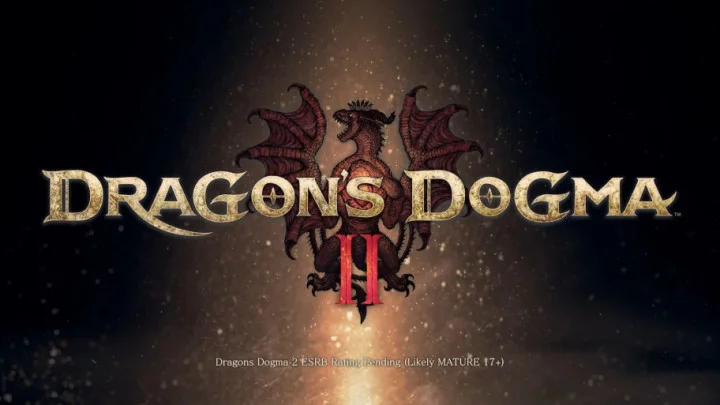When you start a software company, you never know where it’s going to lead. For Tim Sweeney, who founded Potomac Computer Systems in his parents’ Maryland home, it led to a 3D engine that powers most of the world’s next-generation games, as well as TV hits including The Mandalorian. We trace the legacy of the Unreal Engine back to the game that spawned it 25 years ago.
Epic Beginnings
Tim Sweeney was always a tinkerer. As a grade schooler, he took apart and reassembled the family lawnmower and built his own go-kart. After visiting his brother’s software start-up at the age of 11, the coding bug bit him, and Sweeney began developing his own games, none of which he shared with the world. That changed after he went to college, when Potomac Computer Systems released its first game, ZZT, in 1991.
Most new developers play it pretty safe with their first game, but ZZT showed what a singular maniac Sweeney was. On the surface, it’s a top-down action-adventure game that seems like a primitive take on the Legend of Zelda formula—battle monsters, collect treasures, solve puzzles. But the real hook is the built-in editor and scripting language, which allows ZZT to be used as a development kit for other games.
ZZT was a solid success, earning Sweeney around $100 a day from shareware purchases. That was enough to convince him that he could make game development a career. Hiring a small team composed of contributors to a ZZT design competition, he moved the new business out of his parents’ house and renamed it Epic Megagames. The five-person team started work on their next title, Jill of the Jungle.
He linked up with Mark Rein, who had been brought into iD Software as a “probationary president” to handle the business side of that nascent company. He lasted at iD only a few years before team disputes pushed him out, but Rein found a home at Epic. Another key partnership from this time was with Canadian developer James Schmalz, who made the best-selling game Epic Pinball. The revenue from that game was enough for Schmalz to launch his own studio, Digital Extremes.
Unreal Is Born
PC gaming in the late 1990s was centered around the pivot from 2D sprites to 3D polygons, and Sweeney’s keen eye for the market knew that Epic could prosper there. He brought Schmalz’s studio on board in 1995 to help create a 3D rendering engine, which the team—including designer Cliff Blezinski—shaped into a first-person shooter, the overwhelmingly popular genre at the time.
The game Unreal’s development took the philosophy that Sweeney had developed with ZZT and blew it into the third dimension. He knew that flexibility was key to the process, and over the three and a half years that it took to finalize the engine, Sweeney had to learn about hundreds of unique techniques and tools. If building a game is like building a car, creating an engine is more like building a factory: You have to think so far in advance of what the end users will want to do that it can be overwhelming. Unreal featured fully polygonal characters, detailed indoor and outdoor environments, and other features that would soon become industry standards.
It was a testament to the Unreal Engine’s potential that Epic licensed it to other studios before the game Unreal was even released on May 22, 1998. Its support of 16-bit color, volumetric fog, detail texturing, and other techniques was miles ahead of any other 3D game on the market. Companies including Legend Entertainment and Microprose were among the first licensees, and the in-development Duke Nukem Forever switched over from iD’s Quake engine to Unreal.
Even smarter, Epic built an entry ramp into professional development with the inclusion of a robust real-time level editor and the UnrealScript programming language. That allowed hobbyists and modders to have an unprecedented amount of control over their Unreal mods while also training them on some of the most important tools in the full engine. The same year that Unreal came out, Sweeney announced that he was already hard at work on the next iteration of the engine.
Branching Out to Game Consoles
While development for PCs was still Epic’s bread and butter, Sweeney and his team once more saw where the market was heading: consoles. Building one engine that would allow developers to bring their game to computers along with the Sony PlayStation 2, Nintendo GameCube, and Microsoft Xbox was extremely attractive. Unreal Engine 2 also pushed Sweeney’s interest in modularity forward—instead of being a single stable release, it was a constantly-evolving product that would be modified and patched regularly moving forward after its initial release in 2002.
Microsoft Xbox Series X Review
4.0 Excellent $499.99 at Amazon See It (Opens in a new window)Sony PlayStation 5 Review
4.0 Excellent $519.00 at Amazon See It (Opens in a new window)Nintendo Switch Review
4.0 Excellent $299.99 at Target See It (Opens in a new window)Flexibility was the other key element of UE2. While previous engines from a variety of companies had been mostly locked to a single genre—first-person shooters—the team at Epic realized that allowing developers to stretch out and work in different styles would be a selling point. Incorporating the Karma physics engine, a particle system, and more new features, it quickly became the industry standard, powering hit games such as BioShock and Thief: Deadly Shadows.
Unreal Engine 3 followed in 2006, with the first Gears of War its flagship title. New platforms joined the family; most notably, the ability to publish on iOS and Android devices. This update was more consumer-focused—the backend functionality was basically the same, but gamers were treated to a vastly improved renderer with pixel-level lighting, improved physics, and more.
Unfortunately, all these advances weren’t quite as easy to work with for developers. Many complained that Epic’s free-flowing feature releases made their projects incompatible with the latest versions of the engine, forcing them to revisit past work in an attempt to keep up. Most notably, beleaguered Canadian developer Silicon Knights sued Epic in 2007, claiming that the company made promises of engine functionality that it didn’t keep and forced them to develop their own engine for Too Human. Epic countersued, and in discovery, the judge found that Silicon Knights had copied thousands of lines of Unreal Engine code without permission.
The drama eventually abated, and Unreal Engine 3 became a solid choice for AAA developers. With the release of the free Unreal Development Kit in 2009, hobbyists and indie devs also got their hands on it.
Next Generations
Amazingly, development on Unreal Engine 4 had been in progress since 2003, with Tim Sweeney sometimes a one-man team working out what the next big advances in technology would be and figuring out how to capitalize on them. When the engine came out in 2014, it was a quantum step forward.
On the back end, the Blueprints system made it possible to create interactive environments without writing a single line of code, simply by dragging and dropping elements in a visual interface. This was a huge step forward in game development. A task that would have needed an artist, a designer, and a programmer working together could now be accomplished by any of the three, all using the same tool. UE4 also came with the Unreal Marketplace, which allowed creators to sell assets, code, or other tools they’d created.
Meanwhile, Epic was working on a new game that would, through a run of smart decisions and dumb luck, become one of the most popular products in history. Fortnite was spawned in a 2011 game jam after the release of Gears of War, combining third-person shooting with the construction elements from titles such as Minecraft. An internal team slowly refined the idea, with the company bringing in Chinese publisher Tencent to help them pivot to the trendy “games as a service” model.
Fortnite: Save The World launched into Early Access in 2017 and wasn’t very successful. Sure, it was fun, but it didn’t have a hook that would keep people playing. And then, in about two months, the team quickly smashed together a battle-royale mode, released it as a free game with microtransactions, and Fortnite was really born.
If you’ve been living under a rock, Fortnite has pulled in record-setting numbers of players across just about every platform known to man and made Epic nearly $10 billion in revenue. All powered by Unreal Engine, of course. When the game was ported to the fifth iteration of the engine, it also introduced Unreal Editor for Fortnite, which brings wildly robust modding and scripting tools to the millions of players already deep inside its ecosystem.
Other Planets
We’ve been talking exclusively about games so far, but Epic’s next step for Unreal Engine 5 is expanding into new markets. That started with the Disney+ hit The Mandalorian, which had to simulate multiple extraterrestrial biomes on a reasonable budget. Director Jon Favreau tapped the StageCraft system from Industrial Light & Magic, which surrounds actors with a volume of high-resolution LED screens that can adjust themselves based on camera movements. This enables performers to move naturally in a digital environment without requiring massive amounts of compositing. And the software that runs this: Unreal Engine 5.
The same technology has been used on HBO’s Westworld, and other companies are starting to jump on board. At press time, Epic is working with over 300 studios around the world to create digital filming volumes. In addition, the company has pursued an aggressive acquisition strategy since raising $1.25 billion in VC funds in 2018. It has purchased companies that specialize in architectural design, facial animation, motion capture, music games, and more, as well as online creative portfolio sites ArtStation and Bandcamp.
It’s clear that what started as a software project to compete in the niche PC-gaming world has expanded to become one of the key tools across numerous industries. And that can all be traced back to the core principles Tim Sweeney put forth with ZZT: Give users tools that are intuitive and powerful, and they will always surprise you with what they can make. Twenty-five years later, we’re seeing the just tip of the iceberg for Unreal Engine, and the next 25 will be very interesting indeed.









